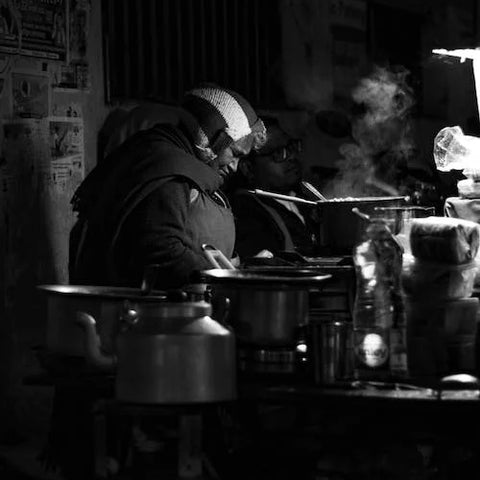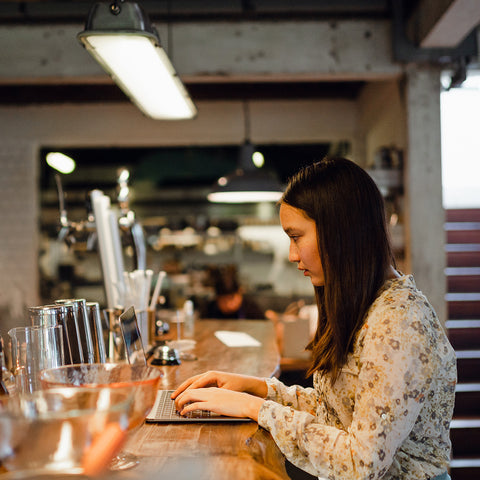Café culture in India would probably not be where it is today if it weren’t for the Indian Coffee House chains.
While the first Indian Coffee House to have opened up in the country is the one in Bombay, which was started in 1936, the title of the oldest café is given to another.
Called Albert Hall, this coffee house was set up by the British in Kolkata in 1876. It was much later converted into a branch of the Indian Coffee House in the 1940s.
Cafés today are not just a cultural emblem. They have become important to the Indian economy and serve as a space of relaxation for tea & coffee lovers in the country.
Continue reading to follow along on key moments in the evolution of café culture in India.
Beginnings of Café Culture
It is a commonly held belief that cafés aren’t as popular in India as they are in other parts of the world. But one glance at historical records and you’d begin to think otherwise.
Scores of people have been gathering together since the time of the roadside tea stalls and vintage coffee houses either to enjoy breakfast in peace or down a glass of piping hot tea/ coffee before they head to work.
Cafés have had a steady presence in the lives of Indians since the 19th century.
Some of the earliest cafés in the country, in addition to the Indian Coffee Houses, are Dorabjee & Sons (est. 1878), United Coffee House (est. 1942), and the Irani cafés of Bombay.

Started by Zoroastrians who immigrated to India, the Irani cafés soon became popular, with more and more cafés opening up in the city. The simple interiors coupled with the otherworldly aromas of the maska bun, Irani chai, and samosa were enough to bring loyal visitors every day.
The oldest Irani cafés were started back in the late 1800s, and some still prosper today, carrying centuries-old traditions into the modern café scene. One such café that is a must-visit on most travel lists is Leopold Cafe.
Throughout the 1900s, several more chain outlets were added to the Indian Coffee House group. With as many as 50 branches being opened up in the 1940s alone.
Many cafés during this time followed along on the British food traditions and served tea as well as English breakfast. You could see the colonial influence on not just the menu items but the architecture and interior design too.
A monumental year in the history of Indian cafés was the year 1996. It was when Café Coffee Day was founded by V.G. Siddhartha in the southern state of Karnataka. CCD went on to become one of the most frequented and widespread café chains in India. The CCD group went international years after with stores opening up in Austria, Malaysia, etc.
Another café that deserves a spotlight of its own is the Rinchen Cafeteria. It is the highest café in not just India but the world! And it’s located in Ladakh at a height of 18,360 ft.
How Have Cafés Changed in the Last Few Decades?
In 2012, the first store of Tata Starbucks was launched in India. Having realised the potential of cafés in India, global brands such as Costa Coffee, Dunkin’, and Krispy Kreme followed suit to set up several branches across the country.
Just as much of a social and intellectual hotspot as before, cafés still welcome hordes of people. Once a cornerstone of political affiliations and initiatives, cafés today cater to the youth and workforce.

From self-employed professionals to those working remotely, people find the amenities of a café and the comfort it offers much more preferable to working at home.
Factors such as free Wi-Fi, air conditioning, and an array of food & beverages are all enticing options that keep these cafés in the hearts of their customers.
It’s not just the role of café that has changed. While once you could walk into an Indian Coffee House and pay INR 12 for a cup of hot coffee, today, you’ll be forced to shell out INR 150 at least at a branded café for a cup of cappuccino, and that too for the smallest cup they have available.
The influx of specialty coffee meant that cafés now had a different market to focus on. There are people, whose disposable income has increased considerably over the years, ready to fork out money for high-quality coffee, grown and served with intent.
You’ll also find artisanal tea cafés in corners of India that engage a niche audience.
There’s a lot of scope for café culture to grow even more in India. Branding seems to be the way forward, and cafés that are able to set themselves apart through brand story, exceptional customer experience, and a focus on quality over quantity may just figure out how to rise above the competition.
According to a report published online, there are more than eighty-five thousand cafés in India today.
We hope you enjoyed reading about the changing café culture in India.
Comment and tell us whether you are a home barista or prefer going to cafés to get your fix of tea and coffee.
Leave a comment: